
New Photos
May 12, 2007
| As we spring into summer, the flowers are changing and so are the creatures in and around them. | |
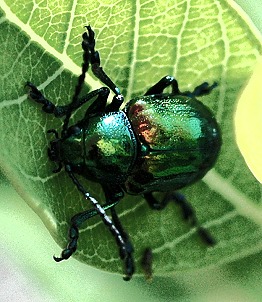 |
|
| We still see butterflies on the dogbane flowers, but now we see dogbane beetles, Chrysochus auratus, on the stems and leaves. They have a beautiful oily iridescence. | |
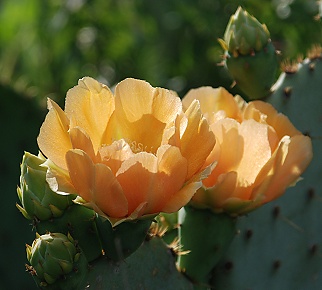 |
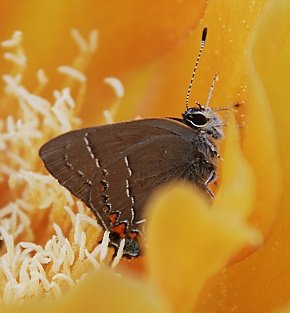 |
| Now that the prickly pear is blooming, we have their flowers in strong lemon yellow (when they open) and shades of gold and golden-orange, as they age. Evening sunlight makes them glow. | Flower scarab beetles, ants, and wasps are more common in the cactus flowers, but here's an Oak Hairstreak, Satyrium favonius, making its way up a petal out of the cup of gold. |
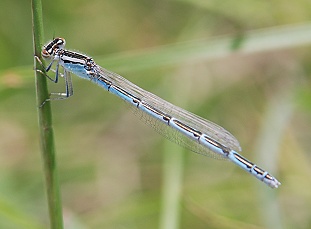 |
|
| Tiny damselflies rise from the grass as we walk past...this one was in the near meadow. I'm not sure what it is yet. I've never seen one quite like it, and though there's one in the book that looks very close, I'm going to ask an expert to help me out. | |
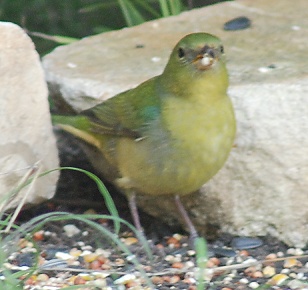 |
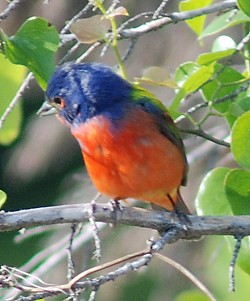 |
| Though the male painted bunting has been coming in to feed in front of us regularly, the female has been shy--or busy on the nest, most likely. But for a time the male quit singing and disappeared, and the female came to feed for about 5-10 minutes, eating millet as fast as she could. Her feathers have some of the same changeability as the male's--even though she's described in books as "plain green", she shimmers a little, and notice the aqua feathers just in front of her wings. | It's been a great week for photographing the male painted bunting. One day he landed on the outside of the brush pile, in full sun, when I had the big lens on the monopod. Photographers dream of chances like this...at least, I did. |
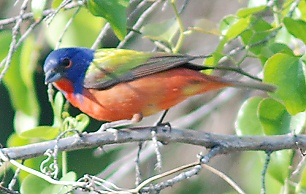 |
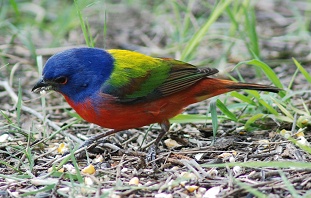 |
| "And this is my good side..." Such a cooperative subject doesn't come along that often. | In open shade, his colors still glow...he was under the little cedar at the corner of Owl Pavilion, eating millet seed from the mix I spread, and let me take dozens (no kidding) of pictures. This is with the best camera/lens combination I have, and at that distance, maybe 20 feet, it prints up to a good size. |
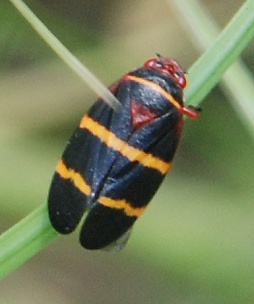 |
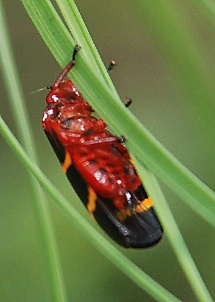 |
| I thought this was a beetle, but it's actually a Two-lined Spittlebug, Prosapia bicincta. The spittlebug nymphs are the ones making those foamy masses on plant stems (it protects them from predators; they're soft and edible); the adults fly around and nibble on the undersides of holly-family plants. For us that would be possumhaw and yaupon. They don't do much damage there, though. | Underneath, the spittlebug was shiny as if it had just been lacquered, and a gorgeous Chinese red with black spots. Spittlebugs are related to leafhoppers and aphids, it says in the book. |
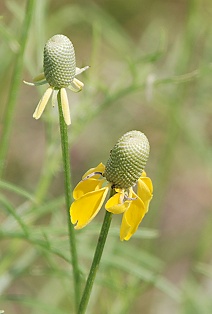 |
|
| We have only a few plants of the yellow coneflower; most of ours have some red or brown on them. This one's just started blooming; you can see the furled petals of the ray flowers on the one in back. | |
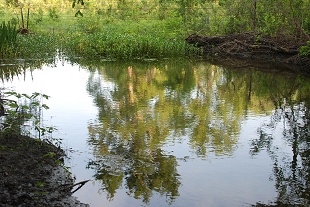 |
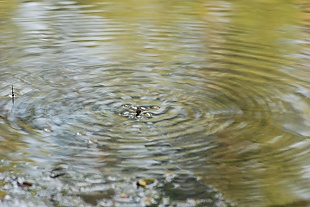 |
| On a warm late-spring evening, a light breeze just ripples reflections in the lower swamp pool. I think we need to put some seats down here. It's a tranquil place to be, near sunset. | A water strider dashes to and fro, meeting and retreating from other water striders, as the water reflects the golden-green light. |
![]()

